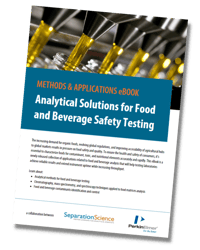
What applications are included?
Liquid Chromatography
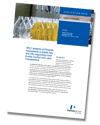 HPLC Analysis of Phenolic Antioxidants in Edible Fats and Oils supporting Food Quality Control and Label Transparency
HPLC Analysis of Phenolic Antioxidants in Edible Fats and Oils supporting Food Quality Control and Label Transparency
It is important for manufacturers producing food stuffs containing phenolic antioxidants to employ robust analytical methods to ensure product consistency and maintain regulatory compliance. This application note demonstrates a fast, robust, and sensitive liquid chromatographic method for the analysis of ten commonly used phenolic antioxidants and allows labelling transparency for fair market competition and consumers’ trust.
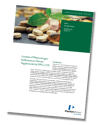 Analysis of Phytoestrogen Isoflavones in Dietary Supplements by HPLC/UV
Analysis of Phytoestrogen Isoflavones in Dietary Supplements by HPLC/UV
A precise quantification of isoflavone content in nutraceutical products is paramount to ensure label-claim accuracy and consumer safety. In this application note, an efficient and reliable method for the determination of six common isoflavone compounds is presented. The method, which was developed in accordance with the USP monograph for soy isoflavones in dietary supplement capsules, utilizes a PerkinElmer LC 300 UHPLC system, with subsequent detection of compounds achieved utilizing an LC 300 PDA detector.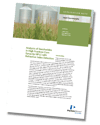 Analysis of Saccharides in High Fructose Corn Syrup
Analysis of Saccharides in High Fructose Corn Syrup
High fructose corn syrup is a substitute for sucrose in a wide variety of products, including baked goods, sauces, beverages, canned fruits, and dairy products. This application note demonstrates the suitability of the PerkinElmer LC 300 HPLC system for performing saccharide content determination via method CRA SACCH.03 through the analysis of nine commercially available high fructose corn syrups.
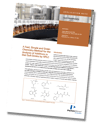 A Fast, Simple and Green Chemistry Method for the Analysis of Additives in Diet Soft Drinks by HPLC
A Fast, Simple and Green Chemistry Method for the Analysis of Additives in Diet Soft Drinks by HPLC
This application note demonstrates a robust method for accurate quantitation of six additives in diet soft drinks using high performance liquid chromatography with photodiode array detection. The method is ideal for users bottling soft drinks who are seeking an intuitive method that can be performed by users of varying skill levels, while also reducing hazardous solvent waste in support of social responsibility initiatives. Although this work focuses on the analysis of finished soft drinks, the method can be easily adapted to the analysis of syrups, or concentrates, by further dilution of the syrup with mobile phase.
Mass Spectrometry
 Analysis of Multi-Residue Pesticides in Rice by LC-MS/MS
Analysis of Multi-Residue Pesticides in Rice by LC-MS/MS
Due to the large number of pesticides potentially used in rice production, the use of multi-residue analytical methods capable of determining many pesticides in one single run is the most efficient approach. In this study, a fast, sensitive, and selective multiresidue method has been developed for analysis of over 200 pesticides in rice samples by coupling a modified QuEChERS extraction method with LC-MS/MS.
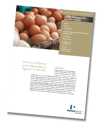 Detection of Fipronil and Metabolites in Eggs by LC-MS/MS
Detection of Fipronil and Metabolites in Eggs by LC-MS/MS
Fipronil is a broad-spectrum phenylpyrazole insecticide almost used to protect crops from insects but also to treat lice and ticks in chickens. The U.S. EPA classified fipronil as Group C, possible human carcinogen, therefore, international organizations defined admissible limits for the fipronil usage, which in egg is of 5 µg/L4. LC-MS/MS technology can provide a robust and reliable method to detect such a contaminant in food.
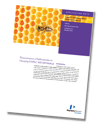 Determination of Sulfonamides in Honey by UHPLC-MS/MS method
Determination of Sulfonamides in Honey by UHPLC-MS/MS method
In apiculture, sulfonamides are the most commonly used antibiotics to treat American and European Foulbrood, a type of disease that infects bees. This can result in bee honey being contaminated with sulfonamides. A quick and reliable UHPLC-MS/MS method was developed for the determination of 11 sulfonamides in honey.
Spectroscopy
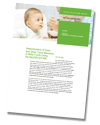 Determination of Toxic and Other Trace Elements in Baby Foods using the NexION ICP-MS
Determination of Toxic and Other Trace Elements in Baby Foods using the NexION ICP-MS
For many children around the globe, commercial baby foods are the main source of nutrients and energy, and therefore, their quality and safety are critical and must be monitored. This application note describes a procedure for the analysis of toxic and other trace elements in baby foods following U.S. FDA EAM 4.7 using the NexION 2000 ICP-MS, demonstrating the benefits of this solution, which include: the flexibility to use different gas modes to remove/mitigate spectral interferences; the improved sensitivity and detection limits achieved for elements, such as Cr and Mn, using Reaction mode with ammonia.
 Determination of Toxic Elements in Food Following AOAC Method 2015.01 using the NexION ICP-MS
Determination of Toxic Elements in Food Following AOAC Method 2015.01 using the NexION ICP-MS
Concentrations of toxic elements in foods are present at trace to ultra-trace levels, requiring sensitive and reliable analytical techniques for accurate measurement. ICP-MS is a powerful technique with multi-element detection capabilities, low detection limits, high speed of analysis, and wide linear dynamic range, among many other advantages. In this work, the analysis of toxic elements in various food matrices following AOAC 2015.01 was validated using the NexION® 2000 ICP-MS.
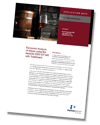 Elemental Analysis of Wines using the NexION 2000 ICP-MS with TotalQuant
Elemental Analysis of Wines using the NexION 2000 ICP-MS with TotalQuant
In this application note, the NexION® 2000 ICP-MS was used for the determination of toxic elements in wine. In combination with the TotalQuant feature in Collision mode, the NexION 2000 can quickly quantify 81 elements using just one standard. Determination of major and trace elements in the same run with the same dilution factor is virtually effortless due to the instrument’s wide working range.
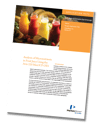 Analysis of Micronutrients in Fruit Juice Using the Avio 220 Max ICP-OES
Analysis of Micronutrients in Fruit Juice Using the Avio 220 Max ICP-OES
For food manufacturers and processors, it is important to be able to quantify the content of food products, including micronutrients, for both safety and quality reasons along with regulatory label-claim requirements, and ICP-OES is generally favoured in a multi-element analytical environment with detection capabilities appropriate for nutritional analysis. This work focuses on the analysis of micronutrients in a variety of commercial juice products using the Avio® 220 Max hybrid simultaneous ICP-OES with sample preparation performed using a Titan MPS™ microwave digestion system.
To download your personal copy of the eBook complete the form to the right of this page.
Plus view the webinars ...
 Determination of Mycotoxins in Food by LC-MS/MS
Determination of Mycotoxins in Food by LC-MS/MS
presented by Dr. Derek Mattern and Dr. Ignazio Garaguso
Mycotoxins in feed, crops, and various foods are known to pose a serious health hazard to both livestock and humans. This webinar will present insights into risk assessment along with solutions for performing selective, sensitive, and compliant analysis for monitoring a range of mycotoxins. A focus will be given to methods for sample preparation and liquid chromatography separation coupled with laminar flow tandem mass spectrometry for the detection and quantitation of mycotoxins in food samples.
 Advances in methods for determination of allergens in food by LC-MS/MS
Advances in methods for determination of allergens in food by LC-MS/MS
presented by Linda Monaci and Rosa Pilolli
Food allergy is an increasing health problem due to its growing prevalence worldwide. European Commission Regulation N. 1169/2011 established the list of 14 allergenic ingredients whose presence must be indicated in the food labels. Targeted LC-MS/MS-based methods demonstrated relevant advantages for allergen analysis. Linda Monaci and Rosa Pilolli (CNR-ISPA, Bari, Italy) are part of the ThRAll project funded by EFSA for the development of a reference MS-based method for the multiple allergen detection in food matrices. In this webinar, they show methods with optimized sample preparation and liquid chromatography separation coupled with laminar flow tandem mass spectrometry for the detection and quantitation of milk and egg allergens in processed food products.
And download the application compendium ...
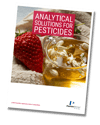 Analytical Solutions for Pesticides Analysis
Analytical Solutions for Pesticides Analysis
This compendium is a collection of selected application notes related to the analysis of pesticides in food matrices by mass spectrometry techniques. A wide range of matrices is covered, including cannabis, fruits and vegetables, tea, grains, and more. For all scientists trying to streamline their pesticide workflows or to those raring to get started exploring the world of pesticide analysis, we believe this is a must read.

